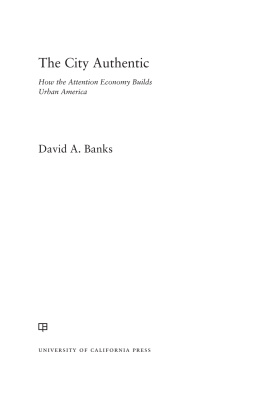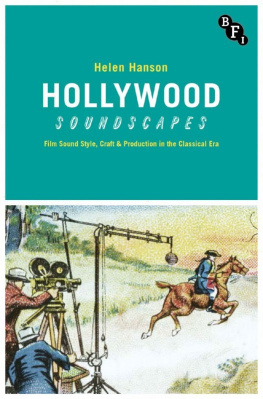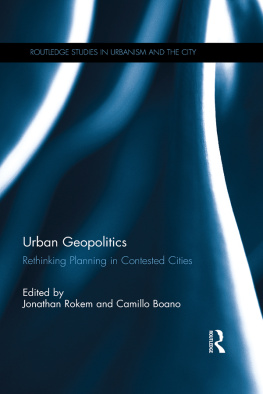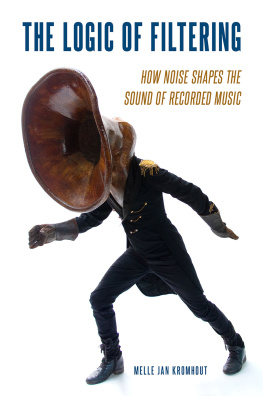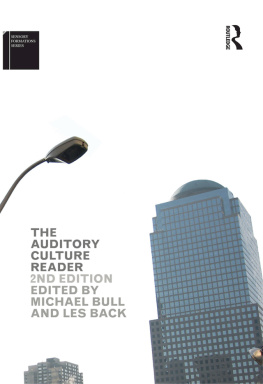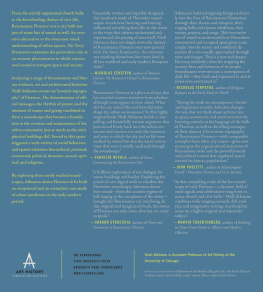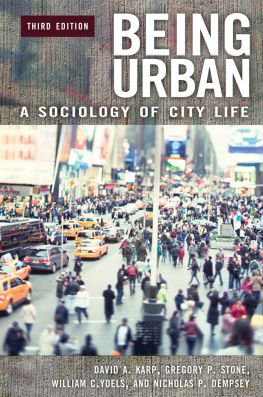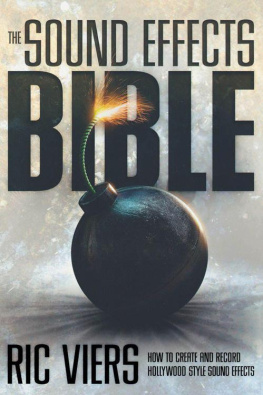GEOGRAPHIES OF URBAN SOUND
Geographies of Urban Sound
TORSTEN WISSMANN
Johannes Gutenberg-University, Mainz, Germany
ASHGATE
Torsten Wissmann 2014
All rights reserved. No part of this publication may be reproduced, stored in a retrieval system or transmitted in any form or by any means, electronic, mechanical, photocopying, recording or otherwise without the prior permission of the publisher.
Torsten Wissmann has asserted his right under the Copyright, Designs and Patents Act, 1988, to be identified as the author of this work.
Published by
Ashgate Publishing Limited
Wey Court East
Union Road
Farnham
Surrey, GU9 7PT
England
Ashgate Publishing Company
110 Cherry Street
Suite 3-1
Burlington, VT 05401-3818
USA
www.ashgate.com
British Library Cataloguing in Publication Data
A catalogue record for this book is available from the British Library
The Library of Congress has cataloged the printed edition as follows:
Wissmann, Torsten.
Geographies of urban sound / by Torsten Wissmann.
pages cm
Includes bibliographical references and index.
ISBN 978-1-4094-6219-4 (hbk) ISBN 978-1-4094-6220-0 (ebk)
ISBN 978-1-4724-0770-2 (epub) 1. City noiseEuropeCase studies. 2. City noise
United StatesCase studies. 3. City and town lifeEuropeCase studies. 4. City and town lifeUnited StatesCase studies. I. Title.
TD893.5.E85W57 2014
363.741dc23
2013045510
ISBN 9781409462194 (hbk)
ISBN 9781409462200 (ebk PDF)
ISBN 9781472407702 (ebk ePUB)
Contents
List of Figures
List of Tables
About the Author
A native to Wiesbaden, Germany, Torsten Wissmann completed a M.A. (Magister Artium) in Geography, Philosophy and Pedagogy (2004) at Johannes Gutenberg-University Mainz, Germany, and a Dr. phil. (Ph.D.) in Geography (2009) at Johannes Gutenberg-University Mainz. His academic positions have been in geography departments at Johannes Gutenberg-University (20042007, Contract Teacher; 2008 to present, Assistant Professor) and the University of Texas at Austin (20112012, Research Fellow). Dr. Wissmanns research and teaching over the last five years has centered on issues of space, identity, sound and media. His key regions of research include Brazil, Malta, Germany, and the United States.
Acknowledgements
This book would not have been possible without the support of many people. I wish to express my gratitude to my mentor, Anton Escher, who always offered his help and enabled me to do my research in the United States. My deepest gratitude is also due to Leo Zonn, for his invaluable assistance, support and guidance, especially during my stay in Austin, TX. Special thanks go to all members of the departments of geography at both the University of Texas at Austin and the University of Mainz, who helped and inspired me in many ways, especially Stefan Zimmermann. I would also like to thank Thomas Bartsch (cartography), Aaron Negron (transcriptions), Tim Rizzo (book cover), Josh Rosenblatt (copyediting), and my student assistants Kathrin Hammes, Marc Hoffmann, and Theresa Schmitt for their continuous help and support. Not to forget Marc Boeckler and Christina Kennedy who encouraged the research project. My thanks also go to all interviewees for their openness. Finally, I also wish to express my love and gratitude to my beloved family, for their understanding and endless love.
Listen Up!
The cacophonous mix of sound that surrounds us in an urban environment is usually not disturbing because what we hear is an integral and accepted part of the urban dwellers life. Yet it is the visual element of the city that dominates the standard urban vocabulary of experience. Sound has long been neglected in urban studies. Traffic, music, language, and nature, as primary examples, help to create unique soundscapes essential to the place-based character of each city, and no consideration of these cityscapes should fail to include them. Substantive research on sound and soundscapes began over half a century ago as Acoustic Ecology with the World Soundscape Project, which focused on human-environmental relationships based on sound. There has not been a sustained body of research since then.
There are many ways to consider urban sound, from pure research to applied. As examples, raw urban sound can be recorded and analyzed for stress, tourist soundwalks can be developed to try to capture the auditive characteristics of the city for the visitor, or the urban soundscape can be deconstructed into single sound events that are subsequently put together to form artistic audio collages. Clearly, sound must be taken into account when considering a citys sense of a place, where a range of sounds from music to human, from technology to nature play integral roles in creating local identity and cultural boundaries. And, of course, governments at all scales, from local to federal, often become involved in issues of sound, from mitigation to promotion, as in the case of music. Taking into account both the urban soundscape and the impacts of sound on the urban dweller, I understand sound not as a by-product of urban life but as a fundamental part of urban life something essential for understanding the citys sense of place.
The purpose of this book is to outline a framework for the study of sound within the urban landscape and to provide a unique look at the geographies of urban sound. Coming from a social geographic background, I am particularly interested in the effects of sound on the individual and the many ways sound influences how we engage the city as place, especially in terms of daily routines. I aim to uncover the socio-scientific potential of sound in the urban environment based on the understanding that sound cannot and must not be seen as detached from this urban landscape, but rather as a constituent element of the same. To my understanding, sound exists not only within the city; sound is the city.
I am convinced that studying the geographies of urban sound involves far more than geography as a discipline. Understanding the daily-lived experiences and environmental perceptions of the urban dweller and his/her place in the city should be of interest to all who wish to understand the city as home.
, demonstrates that any discussion about the urban environment must consider both the individual and collective experiences of sound. The acoustic element, just like the visual, plays its part in creating the citys sense of place.
: Thoughts on Sound and the City
We start with a philosophical discussion of individual perception grounded in the work of Edmund Husserl (see 1960, 1983, 1997, 2001, 2010) (). While human geographical studies mostly spare sound when talking about individual perception of places, other humanistic disciplines use sound more often as an object of research (1.4). From art (Fontana 1987), ethnology (Sakakeeny 2010), and history (Gunderlach 2007) to musicology (Kun 2000), psychology (Boltz 2010), and sociology (Fortuna 2001), findings are presented that specifically focus on (urban) sound. As sound pushes to the center of attention the book finds its motivation to take a closer look at sound and the effects it has on the urban dweller.
: Sound Effects
Starting with human physiognomy we consider sound perception from an acoustic point of view and take a look into the process of hearing and acoustic perception (Byrne, Michael, and Tufts 2011, Clark and Cox 2012, Irwin et al. 2011) (). The findings of Michael Bull (Bull 2000, 2001, 2007) are of importance here, as are those of other studies relating to the impact of earphones on the environmental experience (Simun 2009). With the description of how
Next page

